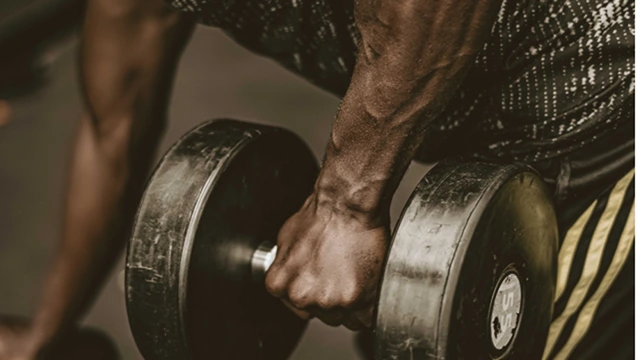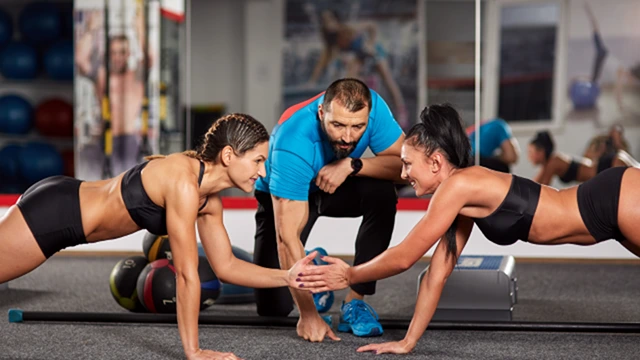Unveiling the Reps Debate: Exploring the Impact of High Reps with Small Weights vs. Low Reps with Heavy Weights

When it comes to strength training, the debate between high reps with small weights versus low reps with heavy weights has been a topic of discussion among fitness enthusiasts and experts. Both approaches have their merits and can lead to improvements in strength, muscle growth, and overall fitness. In this article, we will delve into the impact of high reps with small weights and low reps with heavy weights to help you understand the benefits and considerations of each approach.
High Reps with Small Weights:
Performing high repetitions with small weights is commonly associated with endurance training and muscular endurance. Here are some key aspects to consider:
- Muscular Endurance: High-rep training increases muscular endurance by challenging the muscles to perform sustained contractions over an extended period. This can be beneficial for activities that require endurance, such as long-distance running or cycling.
- Metabolic Stress: Performing multiple repetitions with shorter rest periods can create metabolic stress, leading to increased calorie burn during and after the workout. This can be advantageous for individuals aiming to improve cardiovascular health and burn fat.
- Joint Stability and Injury Prevention: Using lighter weights reduces the stress placed on the joints, which can be beneficial for individuals recovering from injuries or with joint issues. It allows for a greater focus on stability and proper form during exercises.
Low Reps with Heavy Weights:
Low-rep training with heavy weights is typically associated with strength and power development. Let's explore the advantages of this approach:
- Strength Development: Lifting heavy weights challenges the muscles and central nervous system, leading to increased strength gains. This type of training is particularly effective for powerlifting, Olympic lifting, and sports that require explosive movements.
- Muscle Growth: Low-rep, heavy-weight training can stimulate muscle hypertrophy by recruiting a larger number of muscle fibers. This can lead to significant muscle growth and increased muscle density.
- Bone Density and Joint Health: Heavy resistance training can have a positive impact on bone density, helping to prevent conditions like osteoporosis. It also strengthens the connective tissues surrounding the joints, promoting joint stability and reducing the risk of injury.
Considerations and Recommendations:
- Training Goals: Consider your specific training goals when deciding between high reps with small weights and low reps with heavy weights. If your focus is on endurance and overall fitness, incorporating higher reps with smaller weights can be beneficial. On the other hand, if your primary goal is strength development or muscle growth, lower reps with heavier weights are recommended.
- Progression and Proper Form: Regardless of the rep range or weight used, gradual progression and maintaining proper form are crucial. Progressively increase the weight or difficulty of exercises over time to continue challenging your muscles. Focus on maintaining correct technique to minimize the risk of injury and maximize the effectiveness of the workout.
- Individual Variations: It's essential to consider individual variations and preferences when choosing between high reps with small weights and low reps with heavy weights. Each person responds differently to training stimuli, and it's important to find an approach that suits your body, capabilities, and preferences.
Conclusion:
The debate between high reps with small weights and low reps with heavy weights is ongoing in the fitness community. Both approaches have their advantages and can be beneficial depending on your training goals, preferences, and individual factors. Incorporating a variety of training techniques into your routine can provide a well-rounded fitness program. It's recommended to consult with a fitness professional or trainer to tailor your workouts to your specific needs and to ensure proper form and progression. Ultimately, the key is to find a training approach that aligns with your goals
Recent Articles
In today's fast-paced world, time is a valuable commodity. NeoFitHub understands the importance of efficiency and is here to revolutionize your fitness journey. Say goodbye to long... continue
Ready to transform your fitness journey and unleash your true potential? NeoFitHub invites you to embark on a transformative experience with personalized coaching that takes you be... continue
Are you ready to unlock the full potential of your health and fitness goals? NeoFitHub welcomes you to a world of boundless possibilities with online coaching platforms. No longer ... continue

